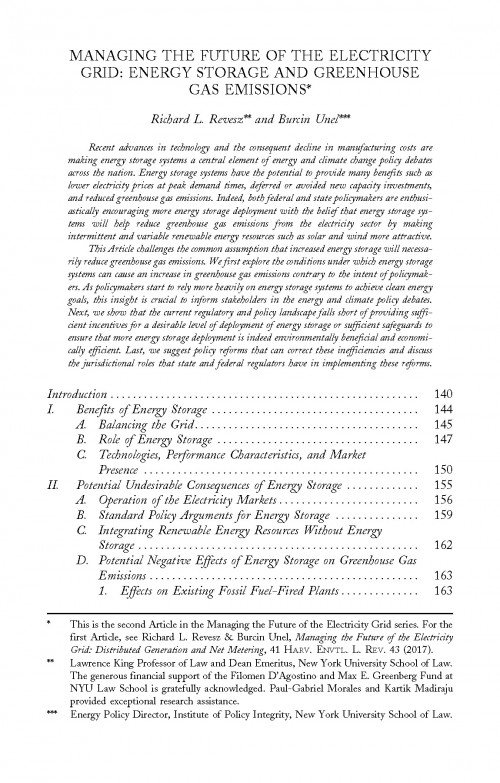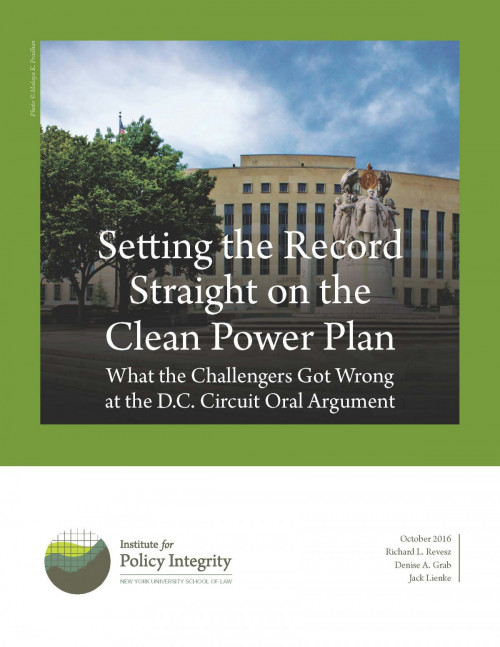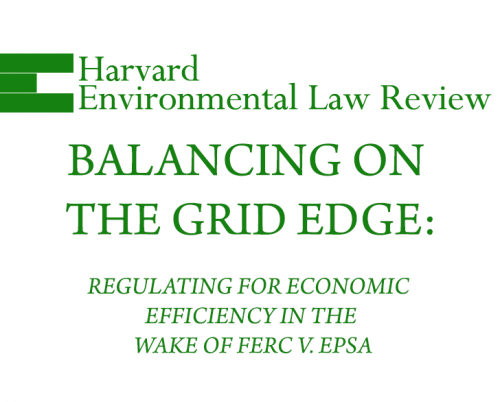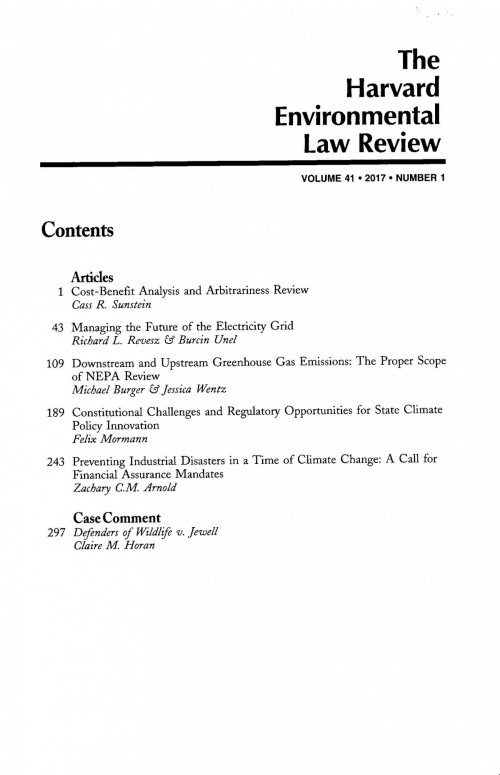-

Valuing Pollution Reductions
How to Monetize Greenhouse Gas and Local Air Pollutant Reductions from Distributed Energy Resources
Distributed energy resources (DERs)—grid-connected, small-scale electric generators such as rooftop solar installations, micro-turbines, combined heat and power systems, customer backup generators, and distributed energy storage systems—are a growing part of the U.S. electric system. They can help avoid the high levels of greenhouse gases and local air pollution produced by traditional energy sources. As their use grows, state electric utility regulators are seeking to compensate DERs accurately for the benefits they offer, including reductions in pollution that contributes to climate change and harms human health. This report shows how regulators can calculate the types and amount of pollution avoided, and then monetize these benefits for use in policy.
-

Managing the Future of the Electricity Grid: Energy Storage and Greenhouse Gas Emissions
Recent advances in technology and the consequent decline in manufacturing costs are making energy storage systems a central element of energy and climate change policy debates across the nation. Energy storage systems have the potential to provide many benefits such as lower electricity prices at peak demand times, deferred or avoided new capacity investments, and reduced greenhouse gas emissions. Indeed, both federal and state policymakers are enthusiastically encouraging more energy storage deployment with the belief that energy storage systems will help reduce greenhouse gas emissions from the electricity sector by making intermittent and variable renewable energy resources such as solar and wind more attractive. This article, published in the Harvard Environmental Law Review, challenges this common assumption that increased energy storage will necessarily reduce greenhouse gas emissions.
The article was selected by Environmental Law Reporter as one of the five best environmental law articles published during the 2018-2019 academic year. An adapted version, The Future of Energy Storage: Adopting Policies for a Cleaner Grid, was included in the August 2019 Environmental Law and Policy Annual Review issue of Environmental Law Reporter’s News & Analysis.
-

Setting the Record Straight on the Clean Power Plan
What the Challengers Got Wrong at the D.C. Circuit Oral Argument
On September 27, opponents of the U.S. Environmental Protection Agency’s Clean Power Plan presented their case against the rule in a hearing before the U.S. Court of Appeals for the D.C. Circuit. The Clean Power Plan aims to reduce carbon dioxide emissions from the nation’s existing power plants. A coalition of states, utilities, coal companies, and other industry groups have sought to block the rule since it was first proposed in June 2014, while a competing group of states, municipalities, power companies, environmental and public health organizations, and clean energy producers have intervened to support the EPA. Over the course of the seven-hour hearing, the petitioners challenging the Clean Power Plan asserted and implied a number of things that don’t stand up to scrutiny. This report sets the record straight on some of their more notable misstatements.
-

Balancing on the Grid Edge
Regulating for Economic Efficiency in the Wake of FERC v. EPSA
This new article from senior attorney Denise Grab is featured in a special edition of the Harvard Environmental Law Journal that focuses on the Supreme Court’s FERC v. EPSA case.
-

Managing the Future of the Electricity Grid: Distributed Generation and Net Metering
As distributed energy generation is becoming increasingly common, the debate on how a utility’s customers should be compensated for the excess energy they sell back to the grid is intensifying. This article provides a thorough analysis of the benefits and the costs of distributed generation and highlights the analytical flaws and missing elements in the competing positions and in all the existing policies.
Viewing all publications in Electricity
